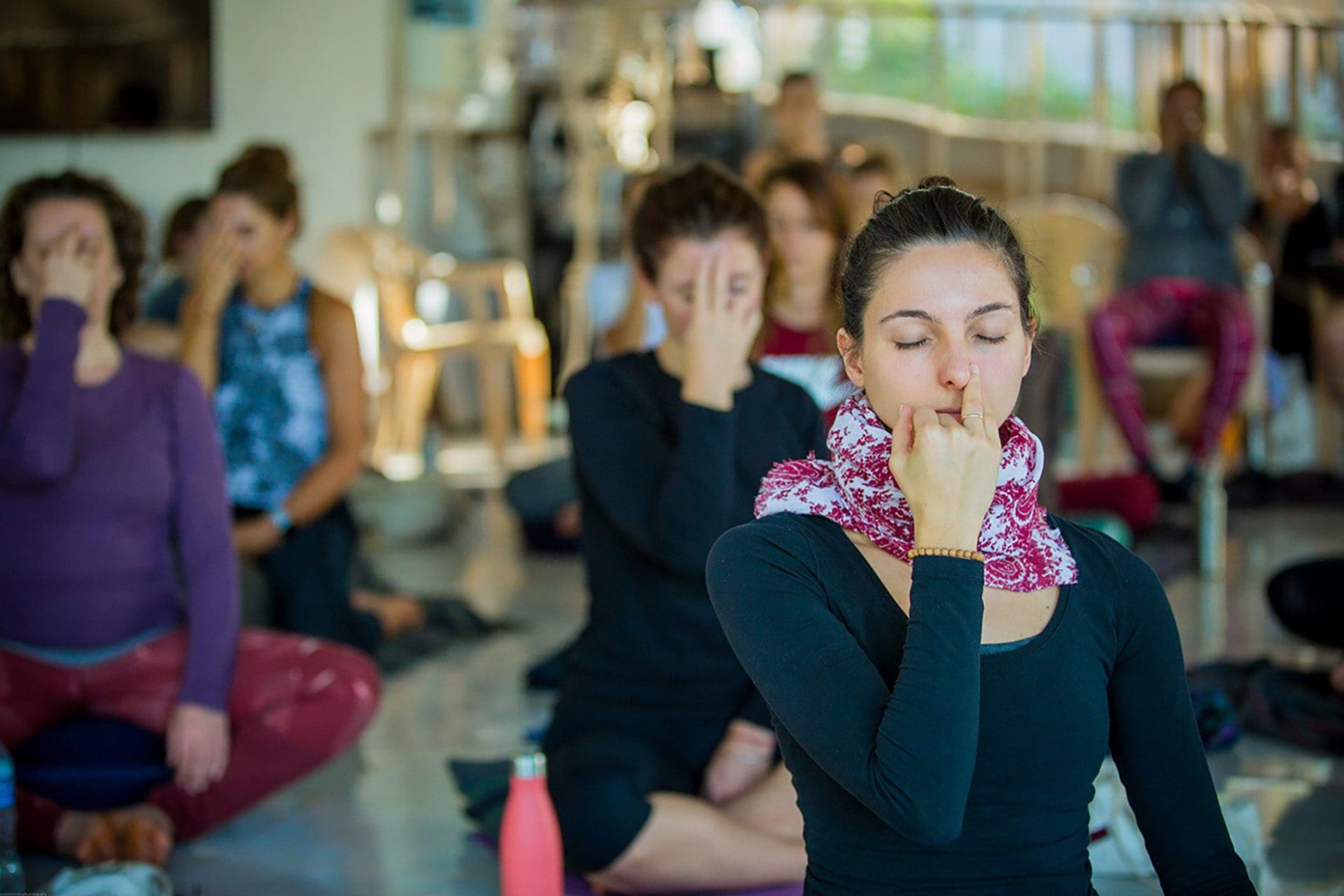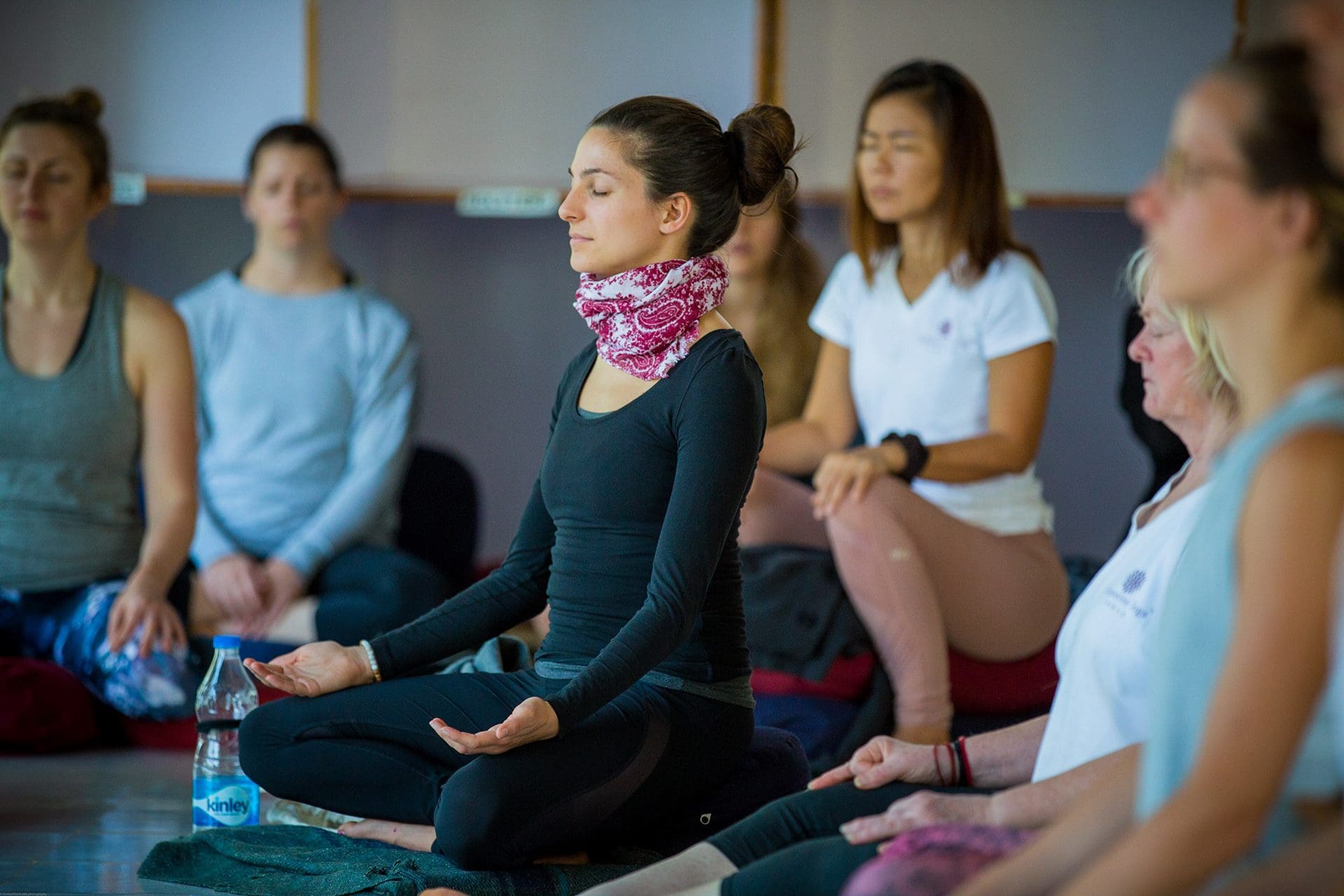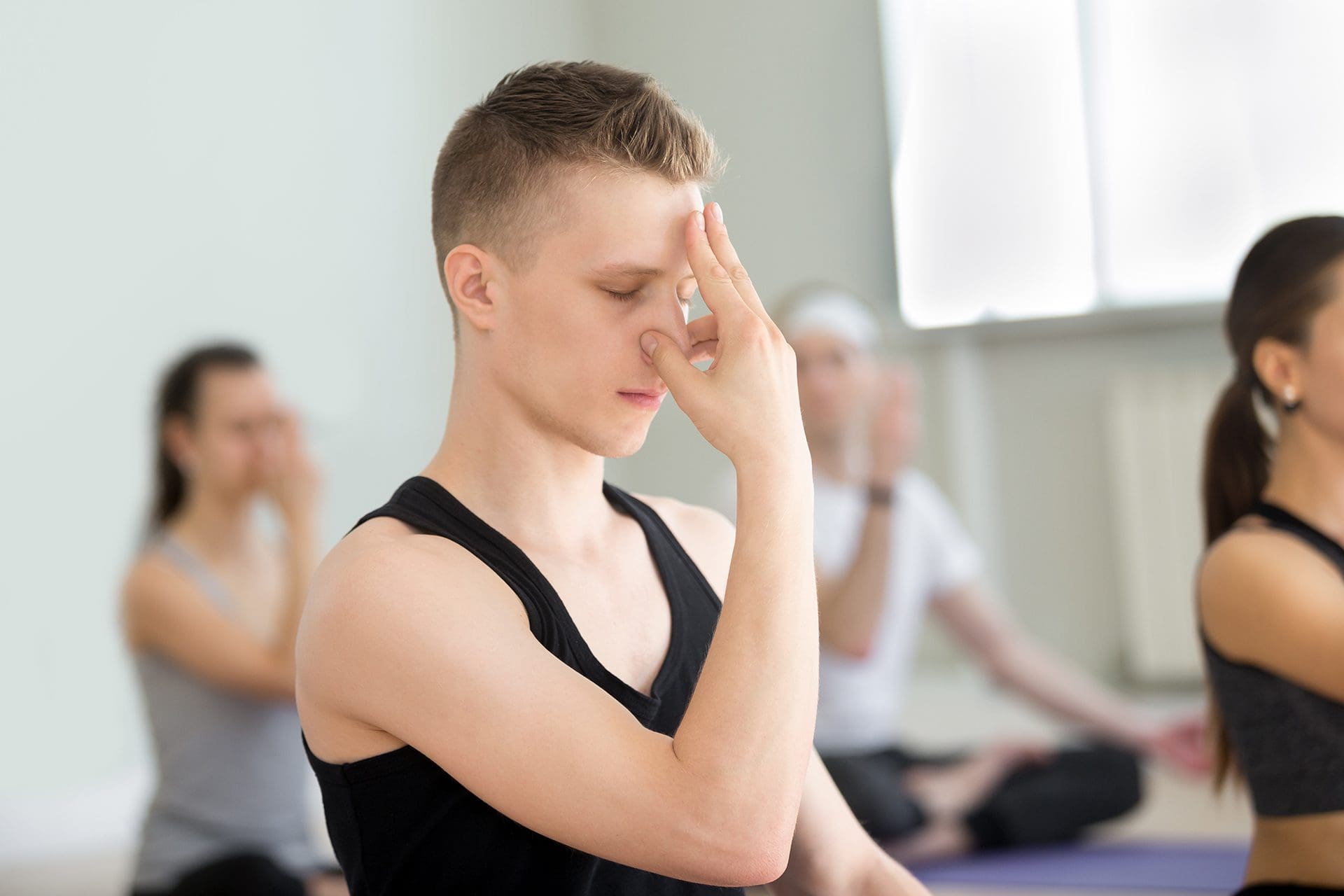Pranayama | An introduction and what you will learn in an online TTC

Pranayama, commonly called breathing exercises, consists of different types of practices. These are all practices that can be done by beginners as well as advanced yoga practitioners. An online pranayama teacher training will equip you with the right knowledge, tools and ways to teach these wonderful practices. This article gives you a little peek into what you will learn from our pranayama online course and a step-by-step on how you can go about introducing pranayama to beginners.
Understanding what is Pranayama

The first step is to explain what exactly pranayama is. Yes, it is breathing exercises, but that is not the literal translation. Pranayama is made up of ‘prana’ which means life force and ‘ayama’ which means expansion. In other words, it refers to the process of expanding the prana. This happens by practicing different techniques that activate, energize and control the prana. Through these techniques or breathing exercises we can influence and direct the flow of prana through the nadis, known as energy channels. This can balance the nadis, and over a period of time lead to the awakening of the dormant energy in us, known as Kundalini.
While breathing is an involuntary act, through pranayama practices one can control the breath. Controlling the breath enables one to control the mind. This breath and mind control deepens one’s asana practice and meditation experience. The 50 hours pranayama teacher training will explain in greater detail what pranayama is.
Benefits of Pranayama
The second step when introducing pranayama to beginners is the benefits. Practicing challenging asanas like a headstand or handstand is on almost everyone’s bucket list, but pranayama is a powerful tool that supports asana practice. Therefore, it is important for beginners to understand how they are benefitting.
In a nutshell, pranayama strengthens the mind-body connection. It improves blood circulation, releases blockages, normalizes the heart rate and blood pressure, and improves immunity. It also strengthens the functioning of the respiratory, cardiovascular and nervous system. It has a wonderful impact on relieving stress, anxiety, and sleep disorders. Each practice is more beneficial for some of these aspects, and this is something you will learn in detail during the pranayama teacher training online.

Science behind Pranayama
Modern science supports the benefits of pranayama in multiple findings. Explaining to your students how controlling the breath has an impact on the physiological system is always good. For example, a study found that just five minutes of Bhastrika pranayama stimulated the parasympathetic nervous system, bringing down blood pressure.
An online pranayama TTC will also delve into how pranayama can balance your autonomic nervous system. In stressful situations, the breath becomes fast and short as your body tries to load itself with oxygen to facilitate its escape. Whereas, when you’re aware of the effect of stressors on your nervous system (awareness comes with pranayama), your response is calm, balanced and mindful. Therefore, your breath will remain normal. In this way, your breath is also a powerful tool to control your body’s responses to stress.
Tips for beginners to practice Pranayama
How does one practice pranayama? Beginners should understand the right posture to sit in, how to keep the body relaxed so there are no distractions, etc. Keeping a blanket handy is also useful. Making sure the external environment is not distracting, the room is clean and well-ventilated is helpful. Practicing at the same time and same place is also good. There are many more such tips and guidelines to practice for maximum benefits. Your formal pranayama training online will guide you through this so you can teach your students in the best way.
Pranayama practices for beginners
Pranayama can be practiced by all. However, it is important to start with the simpler practices and for just a few minutes before practicing for longer. Once practitioners are more experienced, other practices like locks (Bandhas), gestures (Mudras) and retention (Khumbak) can also be added. Practicing in the right sequence is also important. As teachers, giving clear guidelines is key. Beginners can start with alternate nostril breathing (Nadi Shodhana), oceans breathing (Ujjayi), humming bee breath (Brahmari) and frontal lobe cleansing (Kapal Bhati). Learn each of these practices and how to teach them to beginners in a pranayama TTC online.
The practices themselves are not complex. The trick is in teaching them correctly so students and practitioners get the best experience and maximum benefits. Join a pranayama certification online to learn more.

